
 Administration for Children's Services311
Administration for Children's Services311 Search all NYC.gov websites
Search all NYC.gov websites

NYC Administration for Children's Services Celebrates 25 Years of Keeping Children Safe & Families Supported
2021 marks the 25th anniversary of the New York City Administration for Children's Services! While much has changed over the past 25 years, one thing has remained the same: our focus on keeping children safe and families supported.
In recognizing the 25th anniversary, Commissioner David A. Hansell said, "I have a deep appreciation for and pride in the mission of our agency. I want to extend my sincere gratitude and thanks to the extraordinary staff members who have contributed significantly to the agency's mission over the last 25 years of protecting and promoting the well-being of New York City's children and families. I feel truly blessed to be in this role and could not be prouder of the steps we have taken together."
Today, ACS is seen as a model for child welfare systems across the country and the agency continues to charter and pursue a course that is strengthening all aspects of child welfare and juvenile justice work.
- Today, New York City's investment in primary prevention and prevention services has helped drive the foster care census to an historic low. As of 2021, there are less than 8,000 children in foster care, a tremendous shift from the over 42,000 children in care 25 years ago. Many of the youth in foster care - about 42 percent - are living with relatives and friends (otherwise known as kin).
- ACS has reinforced its child protective processes at the front of the system for keeping children safe. Today, child protective specialists have more advanced tools and technology to support their work as frontline staff; more enhanced training and skills development; and stronger quality assurance and oversight mechanisms.
- After successful implementation of Close to Home and more than a century of treating 16 and 17-year olds as adults in the justice system, with the passage of Raise the Age, older adolescents are no longer automatically prosecuted as adults. Under Raise the Age, youth in New York City now have better access to age-appropriate services and programs designed to promote rehabilitation, positive behavior change and successful re-entry into the community all while preserving the safety and security of youth and staff and protecting public safety.
A Look Back at ACS Over the Last 25 Years:
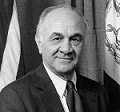 1996: The NYC Administration for Children's Services (ACS) is created by a Mayoral Executive Order, creating a stand-alone agency focused on children and families. The agency is responsible for child welfare child care, Head Start and child support enforcement. Nicholas Scoppetta, who spent time in foster care as a child, is appointed the first Commissioner of ACS. There were 42,000 children in foster care.
1996: The NYC Administration for Children's Services (ACS) is created by a Mayoral Executive Order, creating a stand-alone agency focused on children and families. The agency is responsible for child welfare child care, Head Start and child support enforcement. Nicholas Scoppetta, who spent time in foster care as a child, is appointed the first Commissioner of ACS. There were 42,000 children in foster care.
1997: ACS begins to implement its newly created Reform Plan, which includes the implementation of independent reviews of child protection cases by a newly created Quality Improvement team; the hiring of Child Protective Managers (CPMs) to reduce their scope of supervision from 56 staff to 28; and a 200% increase in child care vouchers to prepare for welfare reform.
1998: Starting with a pilot in the Bronx, ACS moves towards a neighborhood based child welfare system in which providers offer prevention and foster care services in their communities. ACS and the New York Police Department collaborate to create Instant Response Teams to conduct joint investigations on child fatality cases, severe child abuse cases and sexual abuse cases.
1999: ACS introduces the 72-hour case conference, the first in what becomes a number of family team conferences that bring families and their support systems around a table for a facilitated discussion of safety planning and service planning. ACS rolls out its new title series, Child Protective Specialist and Child Welfare Specialist, to increase educational requirements, accountability and professionalization of staff. ACS also launches Project Confirm, a new unit that becomes a point of contact where ACS is notified if any youth in foster care is arrested, so as to prevent unnecessary stays in detention.
2000: In November 2000, ACS dedicates the Children's Center, the first building specifically designed to welcome children entering foster care in a friendly state-of-the- art environment, as well as floors specifically designed to enhance training for staff. From 1998 to 2000, the foster care census dropped by nearly a quarter, with an average daily census of 34,000 in 2000. To better support children and families in their communities, ACS awards nearly $800 million in contracts for foster care, preventive services and homemaking services to neighborhood-based non-profit providers throughout the City.
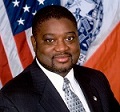 2001: New York City votes to make ACS a permanent agency, making it the first free-standing, chartered agency in the city's history solely devoted to children and families. ACS reaches a critical milestone when the number of children receiving preventive services surpasses the number of children entering foster care. William Bell is appointed Commissioner.
2001: New York City votes to make ACS a permanent agency, making it the first free-standing, chartered agency in the city's history solely devoted to children and families. ACS reaches a critical milestone when the number of children receiving preventive services surpasses the number of children entering foster care. William Bell is appointed Commissioner.
2002: ACS forms teams of mental health, domestic violence and substance abuse specialists housed on-site at borough offices to provide real-time assistance to staff working with families.
2003: ACS focuses on keeping sibling groups together when they are in foster care, with a 13% increase in the year. The foster care census declines to 25,000 children in foster care. ACS focuses on recruiting foster families for youth in foster care so that older youth do not age out without a family.
 2004: John Mattingly is appointed Commissioner. ACS begins dramatic a reduction of the use of residential care for youth and ensuring they are placed with families. ACS implements EQUIP, a new quality assurance and rating system for its child welfare providers, and begins to use these scores as performance indicators that affect the daily rate paid to providers. In 2004, there were 24,000 children in foster care.
2004: John Mattingly is appointed Commissioner. ACS begins dramatic a reduction of the use of residential care for youth and ensuring they are placed with families. ACS implements EQUIP, a new quality assurance and rating system for its child welfare providers, and begins to use these scores as performance indicators that affect the daily rate paid to providers. In 2004, there were 24,000 children in foster care.
2005: ACS begins to implement its plans for rightsizing, reinvestment and realignment. Specifically, rightsizing its congregate care system by eliminating over 500 group home beds in a 2-year period, reinvesting the savings into prevention services and realigning the system to focus even more on prevention services.
2006: ACS creates ChildStat, a weekly meeting where extensive data is reviewed to identify emerging trends and meet goals of reducing caseloads and improving supervision. To begin to address racial disparities within our child welfare system, ACS establishes the Racial Equity & Cultural Competence Committee which is focused on raising awareness of race and institutionalism racism play in child welfare outcomes. That same year, the agency's LGBTQ Strategic Plan is released to amplify awareness of the significant needs for lesbian, gay, bisexual, transgender and questioning (LGBTQ) young people and their families.
2007: ACS begins rolling out a major initiative called "Improved Outcomes for Children" to strengthen oversight of its partner contracted agencies which provide preventive and foster care. The initiative delegated case management to the providers, created stronger monitoring and evaluation of the agencies, and creating incentives for demonstrating positive outcomes.
2008: Communities are key allies in keeping children safe and helping families get the support and resources they need. ACS launches its Community Partnership initiative in seven neighborhoods to promote community coalitions.
2009: Caseloads in child protective investigations drop to historic lows for the city, state and country - at a citywide average of less than 11 cases per worker. After more than two years of a progressive roll out process of "Improved Outcomes for Children," ACS receives full approval by the State Office of Children and Family Services (OCFS) to move from pilot to full implementation so that every preventive and foster care agency is involved in the initiative. ACS also issues an RFP for new child welfare contracts in family based foster care, residential care, preventive services and community partnerships.
2010: The NYC Department of Juvenile Justice merges with ACS, creating the ACS Division of Youth and Family Justice. The integration allows ACS to operate and manage a range of juvenile justice services from preventive services like the Juvenile Justice alternative to placement program, ACS Family Assessment Program, and secure and non-detention facilities. In 2010, there were 16,000 children in foster care.
 2011: Ronald Richter is appointed Commissioner. The Juvenile Justice Initiative and the use of a Risk Assessment Instrument help lead to a 10% reduction in detention admissions. There are about 15,000 children in foster care.
2011: Ronald Richter is appointed Commissioner. The Juvenile Justice Initiative and the use of a Risk Assessment Instrument help lead to a 10% reduction in detention admissions. There are about 15,000 children in foster care.
2012: For many years, New York City youth involved in the juvenile justice system were placed outside of city, sometimes many miles away from their communities and families. In 2012, New York State passes landmark legislation called Close to Home, which allows young people adjudicated by New York City Family Court to be placed in non-secure facilities near their families. ACS works to set up services and residential-like facilities for youth in neighborhoods in and around the five boroughs. Learn more about Close to Home. ACS also launches EarlyLearn NYC, a major innovation in child care and early education. EarlyLearn NYC marks the first time in nearly 50 years, the City dramatically changes the child care system to bring consistent quality early care and education to children and families in our lowest income communities.
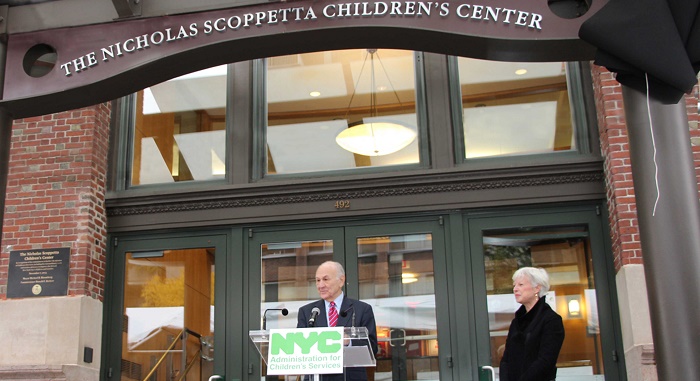
2013: ACS renames the Children's Center in recognition of former Commissioner Scoppetta to be the Nicholas A. Scoppetta Children's Center. ACS dramatically expands the use of evidence-based services for families in order to prevent cases of child maltreatment and reduce the use of foster care. The foster care census declines to under 13,000.
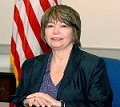 2014: Gladys Carrión is appointed Commissioner. Commissioner Carrión charges ACS to refocus the agency to concentrate on ensuring the overall well-being of children and families, beyond the historical child welfare framework of permanency and safety. ACS works with the Mayor's Office to create the New York City Children's Cabinet, over 20 city agencies joined together to promote collaboration and coordination around issues impacting the health, safety and well-being of families and children. Along with the NYC Department of Education and others, ACS joins the Mayor's commitment to bring prekindergarten to every four-year old.
2014: Gladys Carrión is appointed Commissioner. Commissioner Carrión charges ACS to refocus the agency to concentrate on ensuring the overall well-being of children and families, beyond the historical child welfare framework of permanency and safety. ACS works with the Mayor's Office to create the New York City Children's Cabinet, over 20 city agencies joined together to promote collaboration and coordination around issues impacting the health, safety and well-being of families and children. Along with the NYC Department of Education and others, ACS joins the Mayor's commitment to bring prekindergarten to every four-year old.
2015: ACS launches the major foster care initiative - Strong Families NYC - across all foster care providers, touching the lives of up to 13,000 children a year. Strong Families NYC brings four major innovations, including reducing foster care caseloads to record lows, comprehensive trauma screening for every young person, and two evidence-based models. To support the professional development and continued learning opportunities for ACS' staff, the agency establishes the ACS Workforce Institute in partnership with the City University of New York. ACS launched the Office of Child Trafficking Prevention and Policy (OCTPP). ACS was the very first NYC public agency to dedicate full-time resources for work with, and assistance to trafficked ant at-risk youth, parents, foster parents, ACS staff and service providers.
2016: The number of children in foster care drops to under 10,000 for the first time, as ACS prioritizes building pathways for success for youth transitioning out of care. ACS announces that youth in foster care can attend the City University of New York without worrying about paying for tuition and other expenses. ACS holds its first ever hackathon - the NYC Foster Care Technology & Policy Hackathon - to bring together the foster care community together with technology experts to think 'outside the box' about how to use technology to make the foster care experience better for young people, foster parents, families, and those who support them.
 2017: David A. Hansell is appointed Commissioner. Commissioner Hansell makes widespread reforms focused on improving safety, enhancing support for families, and providing frontline staff with the tools and technology they need to do their job effectively. Some of those reforms include: the re-launch and re-structuring of CHILD-STAT, which emphasizes weekly, rigorous reviews and deep analyses of critical performance data; the creation of the Division of Child and Family Well-Being, which focuses on primary prevention services for families; and providing tablets to all frontline child protective workers.
2017: David A. Hansell is appointed Commissioner. Commissioner Hansell makes widespread reforms focused on improving safety, enhancing support for families, and providing frontline staff with the tools and technology they need to do their job effectively. Some of those reforms include: the re-launch and re-structuring of CHILD-STAT, which emphasizes weekly, rigorous reviews and deep analyses of critical performance data; the creation of the Division of Child and Family Well-Being, which focuses on primary prevention services for families; and providing tablets to all frontline child protective workers.
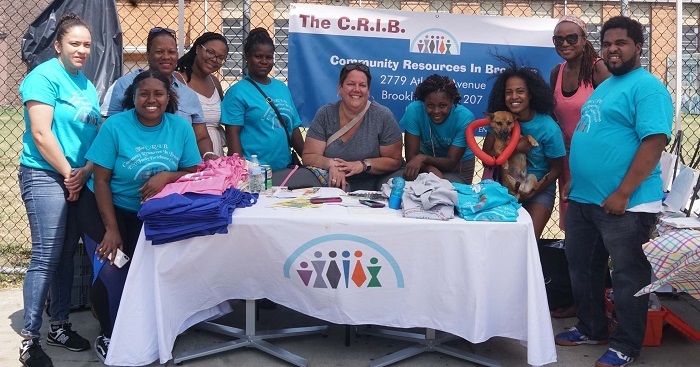
2018: The first-ever annual CPS Week of Appreciation begins, an opportunity for New Yorkers to recognize and thank the compassionate experts who investigate reports of abuse and neglect, take action to protect vulnerable children and help keep families together by providing supportive services. Commissioner Hansell expands the Emergency Children's Services unit at ACS, which responds to reports of abuse and neglect at night and on weekends and holidays. ACS also opens three innovative Family Enrichment Centers, which provide community-driven, comprehensive services to support families. Raise the Age is implemented, which stops 16 and 17 year old children from being automatically prosecuted as adults.

2019: ACS expands its efforts to prevent sleep-related infant fatalities by providing 'safe sleep toolkits' to parents of newborns at all eleven public hospitals citywide. A new website, ACS ConnectME, is launched. The website provides youth in foster care, foster parents, families, and others with easy-to-access information about resources that are right for them. Through the Home Away from Home initiative, ACS also increases the number of new foster homes by 50 percent, turning around a previous six-year decline in the number of new foster homes recruited. ACS announces Fair Futures, a first-of-its-kind effort to connect thousands of youth in foster care to dedicated coaches. As part of the citywide effort, coaches are made available to youth in foster care between the ages of 11 and 21 in order to provide them with social and emotional support to build life skills, set academic and career goals, plan for successful transitions from foster care and much more. As part of ongoing efforts to address racial disparities in the child welfare and juvenile justice systems, ACS announces its "Equity Action Plan," which is informed by an equity assessment looking at how racial disproportionality increases at each point of decision making in the processes.
2020: ACS unveils a new logo, "NYC Children," which reemphasizes the agency's mission to protect and support children and their families. Through targeted reforms and an investment in prevention services, New York City marks an historic low of fewer than 8,000 children in foster care. For the first time in a decade, ACS launches a redesigned prevention services system to better support children and families in every neighborhood across New York City. Throughout the COVID-19 pandemic, ACS continues to work 24/7 to keep children safe and families supported. ACS develops new ways to do its work while also protecting the health of staff and families. ACS announces a multi-pronged action plan to strengthen services and support for LGBTQAI+ youth in foster care. The plan is informed by the findings of a report that suggests more than one out of three youths, ages 13 to 20, in NYC foster care identify as LGBTQAI+ and that those youth are more frequently young people of color. The action plan builds on the agency's ongoing work to improve outcomes for LGBTQAI+ youth in foster care.

2021: ACS continues to educate staff and the public about ways to prevent the spread of COVID-19, including the importance of getting vaccinated. The events of 2020 and 2021, including the disproportionate impact COVID has had on Black and Brown communities, compels ACS to redouble its focus and efforts around racial equity. ACS successfully advocates for the State to require implicit bias training for mandated reporters, like teachers, doctors and social workers, much like the requirement that is in place for ACS staff. To further elevate and centralize the critical work of the ACS Office of Equity Strategies, Commissioner Hansell moves the office to under the purview of the Commissioner's Office. ACS rebrands and expands its differential response, CARES (Collaborative Assessment Response Engagement and Support), which diverts lower risk cases from the traditional investigation path. ACS also announces the awards selected to operate its Family Assessment Program (FAP) and includes a component that requires each organization to address equity.
25th Anniversary Media
Audio Description: On July 21, in a virtual event, ACS celebrated 25 years of service to children and families with a thought-provoking discussion featuring former Commissioners: William Bell, John Mattingly, Ronald Richter, Gladys Carrión and our current Commissioner, David A. Hansell. The event also featured a video tribute to the late Nicholas Scoppetta, the first Commissioner of ACS. Commissioner Hansell also paid tribute to Scoppetta noting that "his vision and commitment, 25 years ago, to make ACS a stand-alone agency that would provide high quality services to keep children safe and strengthen families, has guided this agency's work for the past 25 years." Following the video tribute to Commissioner Scoppetta, and before the panel discussion, Deputy Mayor for Human Services, Melanie Hartzog, read a proclamation from Mayor Bill de Blasio, proclaiming July 20 as "Administration for Children's Services Day." The proclamation said in part, "As we build a more compassionate and safer New York, ACS continues to revolutionize how we approach child welfare and juvenile justice." NBC child welfare reporter Melissa Russo moderated the panel discussion and described key aspects of each Commissioner's tenure.
Audio Description: A tribute to the first commissioner of the Administration for Children's Services, Nicholas Scoppetta. Viewers learn about Scoppetta and his accomplishments as commissioner from 1996-2001, in his voice and from others. The video finishes with the opening and a dedication of the Children's Center in Scoppetta's name in 2013.


